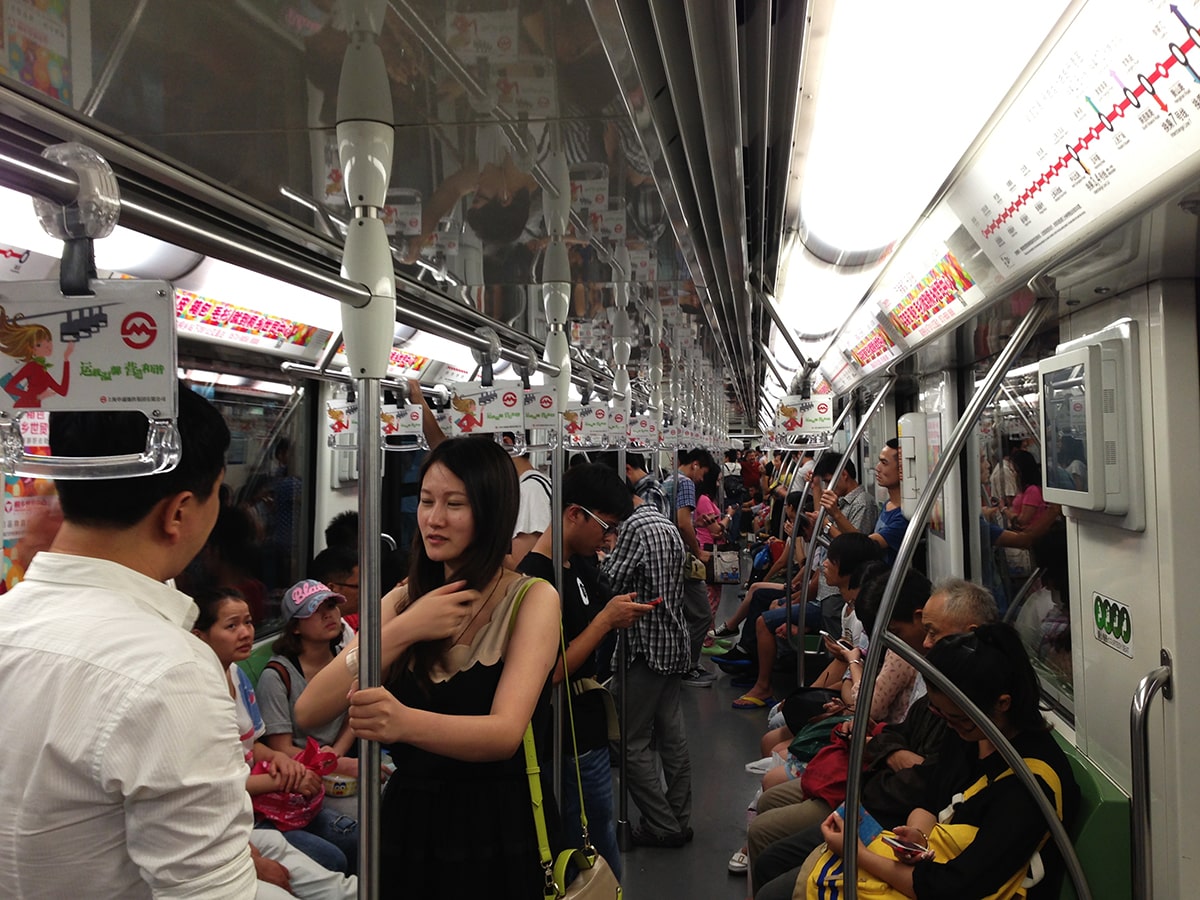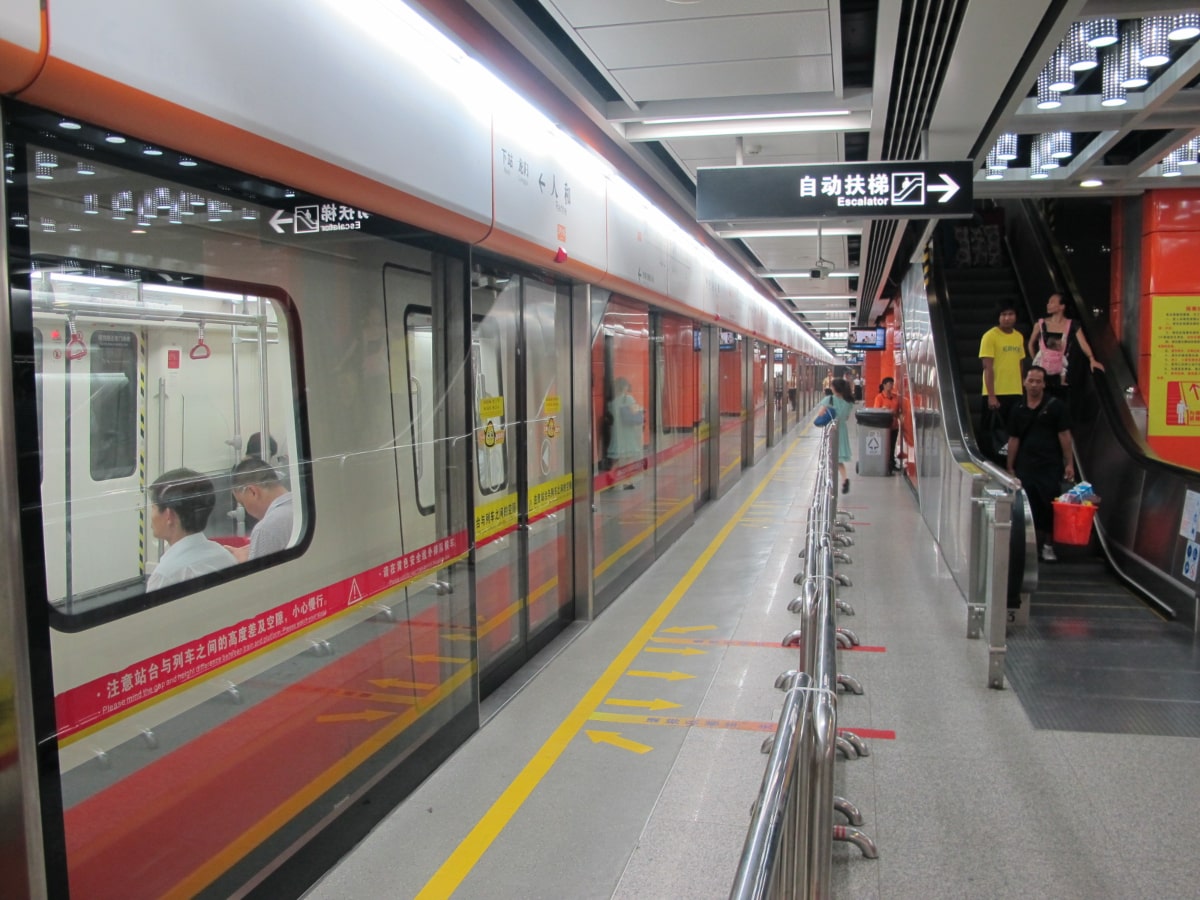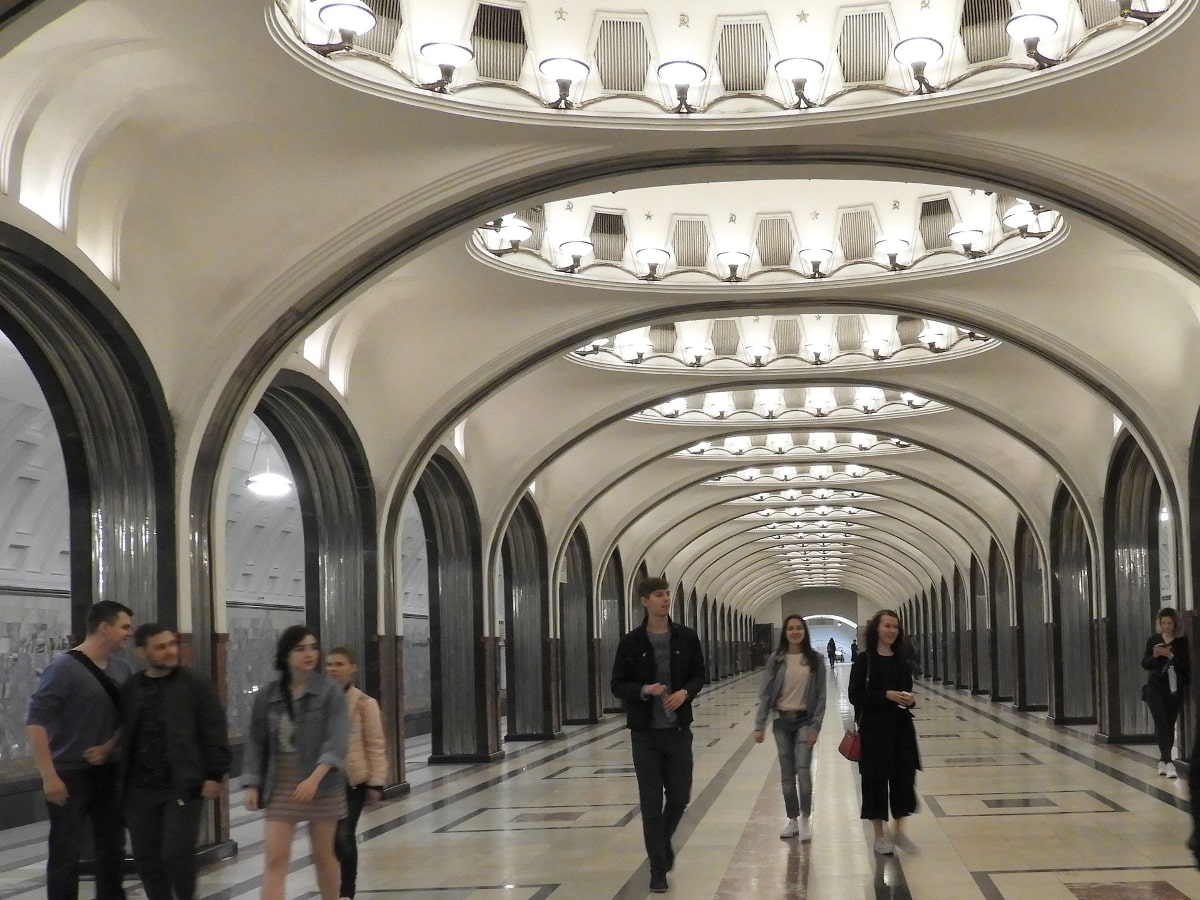Today, we’re going to try to find the largest subway system in the world. As some of the world’s megacities continue to grow, there are many expanding subway, metro and underground systems catering to increasing numbers of passengers each year. That’s particularly the case in China which has expanded its five largest metro networks since the start of the 2020’s and dominates this countdown.
The most complete set of data we could find measuring the length and annual ridership of global subway/metro networks was this Wikipedia article and the data comes from there. However it is worth noting that there are at times grey areas between what constitutes a metro network and what should be classed as suburban rail. Many of these cities have even larger networks when taking into account rail networks serving their wider metropolitan areas.
What is the largest subway system in the world? – Top 10 by network length
1. Shanghai Metro, China – 743 km

The largest subway system in the world is the Shanghai Metro and it’s a pretty clear front-runner having opened its newest Line 15 in early 2021, taking the total number of lines to 18. The city is well on course to become the global leader in all kinds of fields this century and it’s only fitting that it should have a large, world class transport system.
There are nearly 4 billion rides taken on the Shanghai Metro each year which equates to more than 10 million rides every single day. The metro is clearly the easiest way to get around Shanghai but commutes can still be long for many residents. Its longest line (11) is 82 km long and terminates at the Shanghai Disney Resort in the Pudong neighbourhood which opened its doors to the public in 2016.
2. Beijing Subway, China – 703 km
Not far behind is the Beijing Subway, only 40 km shorter than the Shanghai equivalent. It’s much older, having first opened in 1971, 22 years before the Shanghai Metro, and it has been transporting residents and visitors around the capital of the world’s most populated nation ever since.
It has 24 lines and there are already numerous sections being constructed with 12 expansions expected to be completed by the end of 2022, adding more than 140 km to the current track length. At some point over the next twelve months, Beijing is likely to have the longest subway system in China and indeed the world.
3. Guangzhou Metro, China – 531 km

Staying in China (you’re probably detecting a common theme here) and the third largest network is in the southern city of Guangzhou. With 247 stations and 14 lines, it’s another monstrous network that stretches as far south as the Nansha Passenger Port, almost halfway from the centre of Guangzhou to the cities of Hong Kong and Shenzhen.
There are even plans to extend the metro further to reach the Hong Kong-Zhuhai-Macao Bridge border point which would provide faster connections to the two autonomous regions. The proposed line 18 if completed is expected to see trains travel at 160 km per hour, slow by the standards of China’s high-speed long-distance network, but absolutely rapid for a city metro service.
4. Chengdu Metro, China – 519 km
Perhaps the most remarkable inclusion is that of Chengu. That’s because the Chengdu Metro only opened as recently as 2010! In a little over a decade it has grown to be larger than every single subway network outside of China with an estimated 6 million rides per day.
It’s a remarkable feat that puts the transport networks of many western countries to shame with a new line added on average every single year since its inception. As one of the world’s newest metro networks, it also boasts a really modern feel with futuristic stations featuring bright, floral designs. There are also driverless trains on line 9 of the Chengdu Metro, following in the footsteps of Shanghai and Guangzhou which also have fully automated services.
5. Moscow Metro, Russia – 412 km

Finally we leave China at number five and head to the Russian capital. Moscow’s Metro dates back to the mid 1930’s but has undergone a major expansion over the last ten years with some major tunnels being built and 150 km of new tracks added to better connect the city.
It connects Moscow with the small neighbouring cities of Krasnogorsk, Reutov, Lyubertsy and Kotelniki. Europe’s busiest metro system is even considered something of a tourist attraction in itself with some of its older stations providing fascinating glimpses into the Soviet era. The network runs deep below the ground, reaching a depth of 84 metres underground at Park Pobedy, the Moscow metro’s deepest station.
The top ten largest subway systems in the world are rounded off by China’s Shenzhen Metro (411 km), Britain’s London Underground (402 km), USA’s New York City Subway (399 km), China’s Nanjing Metro (378 km) and China’s Chongqing Rail Transit (370 km).
Which is the world’s busiest metro system?
| Rank | Network | Annual Ridership (billions) |
| 1 | Shanghai Metro | 2.83 |
| 2 | Tokyo Metro | 2.76 |
| 3 | Moscow Metro | 2.56 |
| 4 | Guangzhou Metro | 2.41 |
| 5 | Beijing Subway | 2.29 |
| 6 | Seoul Subway | 2.13 |
| 7 | New York City Subway | 1.70 |
| 8 | Hong Kong MTR | 1.69 |
| 9 | Mexico City Metro | 1.66 |
| 10 | Shenzhen Metro | 1.63 |
These figures are for the total rides each year. Some figures relate to 2020 while others are for 2019 which may create a slightly distorted picture given metro/subway usage decreased dramatically in many cities once the pandemic started in early 2020.
Even so, the Shanghai Metro, which does have figures from 2020, leads the way with 2.83 billion rides. The Tokyo Metro, which is actually relatively short at a total length of only 195 km, is next while the busy Seoul Subway is another notable inclusion at number 6. The London Underground, the oldest metro in the world and perhaps the most famous, doesn’t even feature in the top ten.
Were we to rank the world’s subway systems by number of stations, New York would actually come out on top. It has 424 unique stations, over 50 more than the next highest which is Shanghai with 369. However given the rate at which China is currently expanding its major urban rail network’s you’d expect China to dominate almost all of these countdowns in the coming years.
This article was published in July 2021 and the figures are correct as of then.


The Seoul metro system is over 1,000Km. This article is wrong.
Including all the additional commuter trains and other services in Seoul it may be, but this is purely about the subway/metro. If we included all rail services, most of these cities would have much longer networks than listed above.